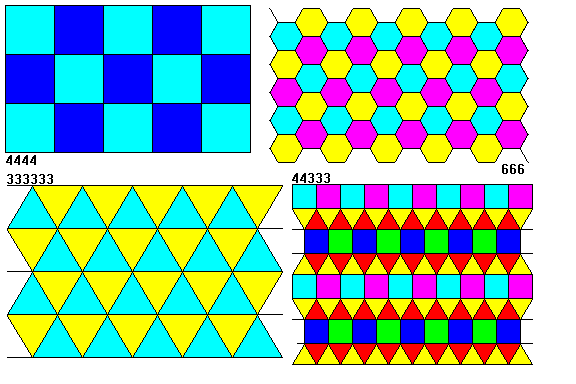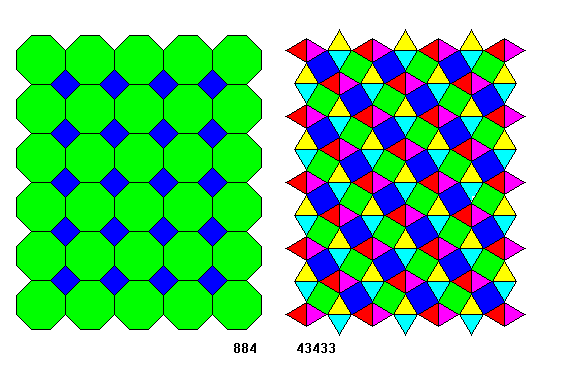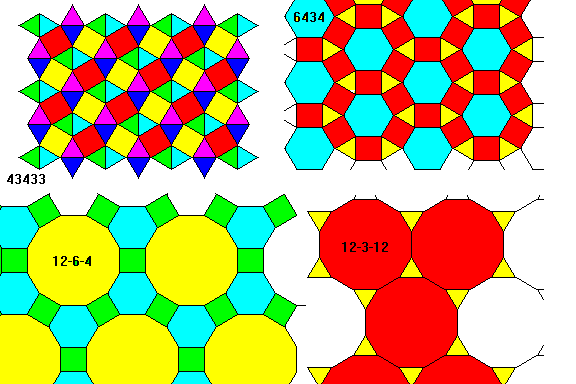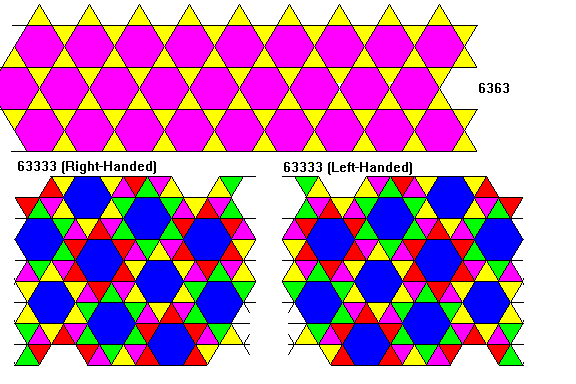Archimedean Tilings
Steven Dutch, Professor Emeritus, Natural and Applied Sciences, University of Wisconsin - Green Bay
There are three uniform tilings of the plane by regular polygons: with squares, triangles and hexagons. By uniform we mean that every vertex is the same. (If we eliminate that restriction there are an infinite number - we could stack bands of squares and triangles in any sequence desired.) Thus we can symbolize these three regular tilings as 333333, 4444, and 666, where each symbol denotes one of the polygons at each vertex.
In addition there are other tilings with combinations of polygons. The only possible combinations besides those above are:
- 33336 (left- and right-handed versions)
- 33344
- 33434
- 3463
- 3636
- 3-12-12
- 4-6-12
- 488
These plus the three regular tilings make a total of eleven, called the Archimedean Tilings. Other sets of regular polygons will fit around a single vertex, for example 5-5-10, but they can't be extended to cover the plane completely.


Even the Experts can be Fooled

More than one geometry text has claimed that tiling 43433 has a right- and left- handed version. If we draw the pattern so that one set of squares is upright, the other set appears to be tilted to the right or left. In reality, the mirror planes, which run along the edges shared by pairs of triangles, are just hard to see in this orientation. The tiling actually has symmetry p4gm.

Tiling 63333 really is enantiomorphic, that is, lacks mirror planes. It therefore has a left- and right- handed version as shown below.

Return to Symmetry Index
Return to Professor Dutch's Home page
Created 25 Sep 1997, Last Update 2 July 1999